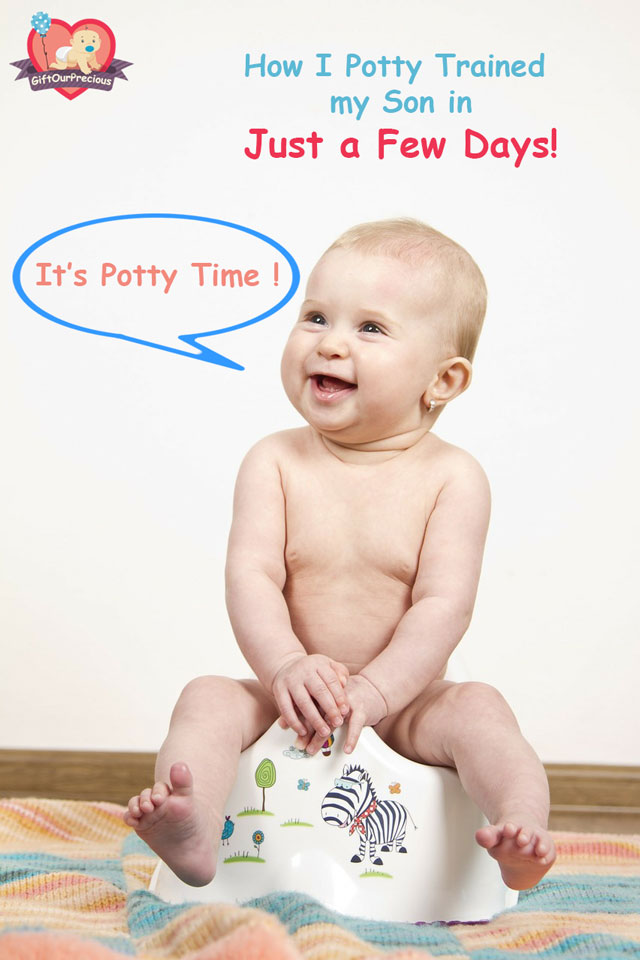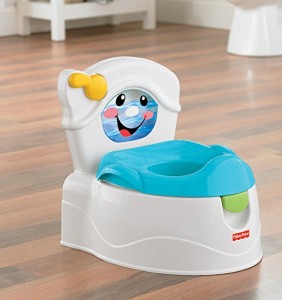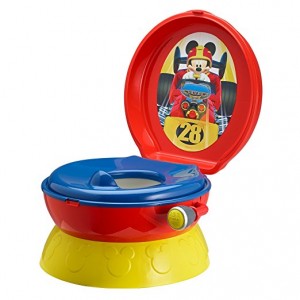
When do Kids get Potty Trained ?
According to Dr. Ari Brown M.D., Pediatrician and author of “Baby 411: Clear Answers & Smart Advice For Your Baby’s First Year” and “Toddler 411: Clear Answers & Smart Advice for Your Toddler“, children show signs of readiness for potty training when they have
1) Body Awareness
2) The desire to be Clean and
3) The ability to use bathroom independently
When I (Mum) started potty training my son, Leeroy when he was 3 year old, he had shown the 3 above mentioned signs that he was ready to be potty trained.
Before I started potty training my son, I did have some worries that it might be a long and difficult process.
Often in parenting forums, many mummies had mentioned how hard it was to potty train their children and how stress they were.
But after potty training my son when he turned 3 years old son last year, I was surprised by how well things went.
It was not as stressful as I thought it would be and the process was pretty smooth and fuss-free for me with just little accidents here and there.
Well! Who doesn’t encounter accidents when toilet training right?
Hence we should not make a big fuss over such accidents as it will put the children off potty training.
Below are some points which I would like to share from my experience of potty training Leeroy in just a few days.
Recommended Reading: 13 Tips on How to Raise Happy Children
WHAT are the Things to Prepare
- A potty
There are many types of potty to choose from in the market, from the most basic ones to the more fanciful ones.
All will work well but to encourage your children to use the potty more often, you may like to shortlist a few potties and let your child have the final say on which potty to get.
They may be more receptive to using the potty more if they are the ones to choose their own potty and when they are involved in the preparation process.
- Waterproof bed-sheet
It is important to get a waterproof bed-sheet for your child’s bed as they will tend to have peeing accidents when they nap or sleep especially in the beginning of potty training.
- Underwear
Get enough underwear as they will need a change when peeing or pooping accidents happen, especially in the beginning of potty training.
Let them choose their favorite underwear so that they are involved in the preparation and will be more receptive to the transition to using potty.
When I started potty training Leeroy, I promoted him from wearing diapers to underwear with cartoon characters that he liked.
I praised him for being promoted to a big boy who wears underwear instead of diaper now.
I also reminded him that underwear cannot retain urine and as a big boy now he will need to use the potty when he pee and poop.
- Bathmat with waterproof bottom
This is very useful for easy cleaning up of mess occurred from potty training.
- Children Step Stool
If the washing basins are too high for your child to reach, children step stool can help your child get access to them. It is important to note that basic hygiene like washing his/her hands after pee or poop should also be integrated into your child’s potty training.
HOW To Do It
1. Decide a Date
Choose a date that you can commit for a few days to stay with your child at home for the potty training.
Over the weekends will usually be the best bet.
2. Prepare your child mentally
Upon deciding on the date to start potty training, prepare your children mentally at least 1 to 2 weeks in advance. Below are some ways :
- Inform the date
Inform your child as soon as you have decided the date to start potty training so that he/she is aware of the transition.
Explain why he/she needs to transit to potty, and do say it in a nice, fun and loving manner so that your child will look forward to the idea of transiting to using the potty.
When I wanted to potty train Leeroy, about 2 weeks before the actual date, I hug him and told him that he is a big boy now, hence I will be transiting to using the potty from xx date onward.
- Read potty training books
You may start to read some children potty training books with them.
- Watch children potty training videos
You may like to watch some children potty training videos with them.
- Let them see you pee and poop
If you are comfortable with the idea of your child seeing you pee and poop, it is good to demonstrate to them how you do it.
Remember to show them how you wash your hands after every toilet visit too.
Children like to model their parents, hence they will be more receptive when it is their turn to use the potty.
3. Feed your child fluid
On actual day of potty training, try to feed your child with lots of fluid throughout the day so that he/she will get to practice peeing in the potty more often.
4. Remove the diaper
Let your child wear a big t-shirt with underwear underneath.
Remind your child to inform you when he/she wants to pee or poop as the underwear cannot hold on to the pee or poop.
Some parents opt to let their child goes bottomless during potty training and you may adopt this method too.
Personally for me, Leeroy does not feel comfortable with naked bottom and as I am living with my in-laws too, I feel that it is not too good if the poop drop all over their place.
With underwear, at least the poop mainly stays in the underwear.
5. Remind the child to visit the potty and wash hand after every visit
Remind the child to visit the potty when he/she wakes up, after every meal, every 2 hours interval throughout the day, before sleep and in the middle of the night.
Remember to remind your child to wash hands after every visit.
Encourage your child to sit on the potty, even if he/she does not feel like there is pee or poop, just to get the feel of it.
But do note that you should not be forceful or stress if your child does not want to do so especially during the day time, as a child with body awareness will know if he/she has any pee or poop.
It does not help to force your child to sit on the potty when he/she does not want to, as being forceful will risk him/her developing negative feeling over using the potty, which will delay his/her potty training progress.
During night time, a child may be too tired and may not want to get up to visit the potty even if he/she wants to pee.
For Leeroy, I kept on bugging him gently to wake up to pee in the middle of the night and even supported him and sometimes carried him to the potty if he is still in his lala dream land and had difficulty making his way to the potty.
6. Give lots of praise and acknowledgement
The best reward to the children for doing well are their parents’ praise and acknowledgement.
Remember to praise your child for every progress he/she makes, such as when he/she wears underwear, sits on the potty, has a successful pee, and give lots of positive encouragement along the way.
Show your child your acknowledgement lovingly when he/she has made successful progress.
Recommended Reading: 12 Tips to Building Resilience and Confidence in Children
7. Do not punish or scold during accidents
Peeing and pooping accidents will happen, especially in the beginning of the potty training and during sleeping time, as the child tends to forget that he is no longer wearing diaper.
It is important not to scold or punish the child when accidents happen, as he/she will be fearful and may develop negative emotion towards potty training, thereby harder for him/her to transit from diaper to potty.
Instead, parents should give more positive encouragement when accidents happen, so that the child will be more encouraged to discard his diaper and work step by step towards potty trained.
Recommended Reading: Top 10 Tips on How To Be a Good Parent
8. Communicate to all caregivers
Upon potty training, all the caregivers such as the babysitters, teachers in school or childcare center need to be informed that your child is potty trained.
Remind them not to let him wear diaper and please get them to remind him/her to use the potty throughout the day.
Remember to prepare extra change of clothes as accidents may still happen.
The above are steps taken by me to potty trained Leeroy within a few days.
Hope it will be useful for you too. 🙂
Do not be despair if it is not successful the first time round. You can wait for a few days or 1 to 2 weeks more before trying again.
Good luck on your child’s potty training!
Additional Read :
http://www.parents.com/toddlers-preschoolers/potty-training/tips/potty-training-tips/?slideId=43928


